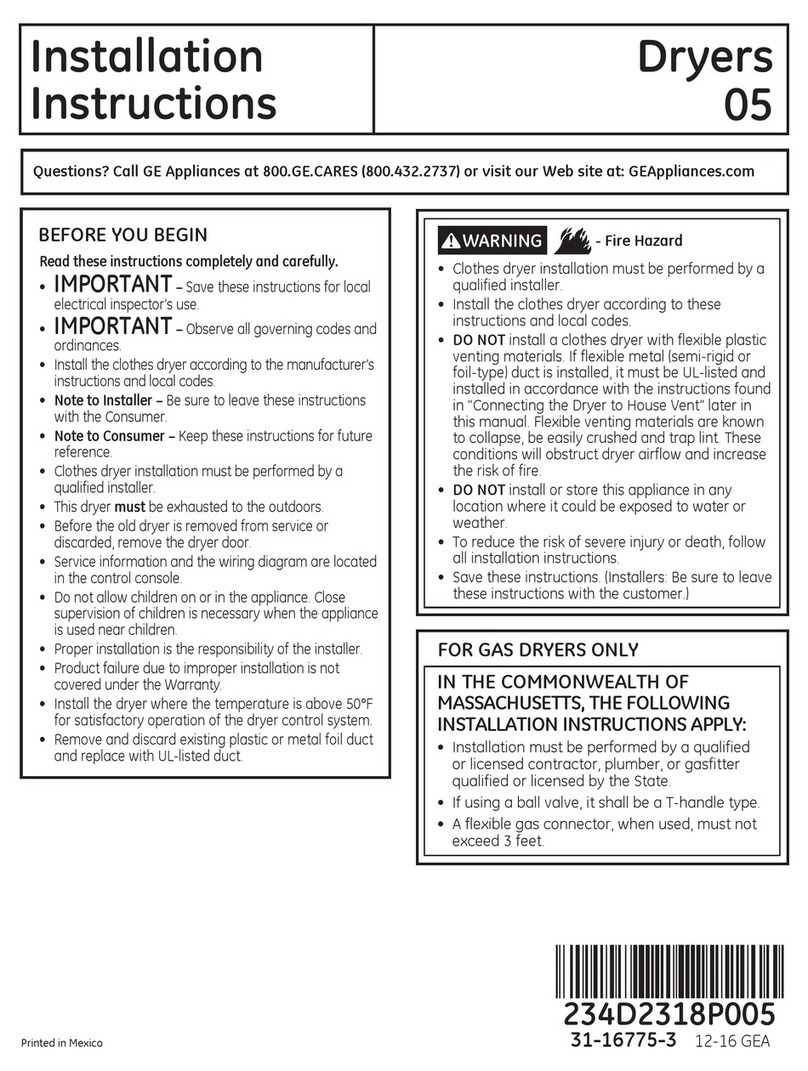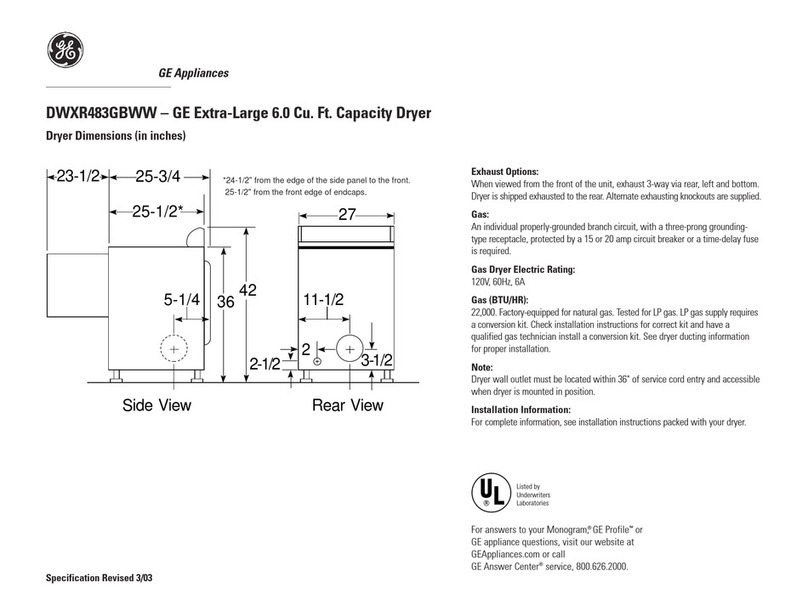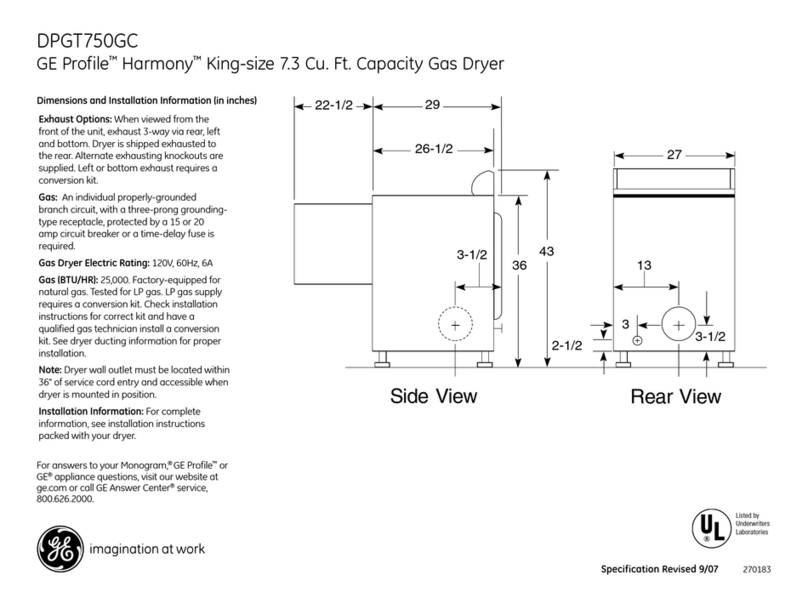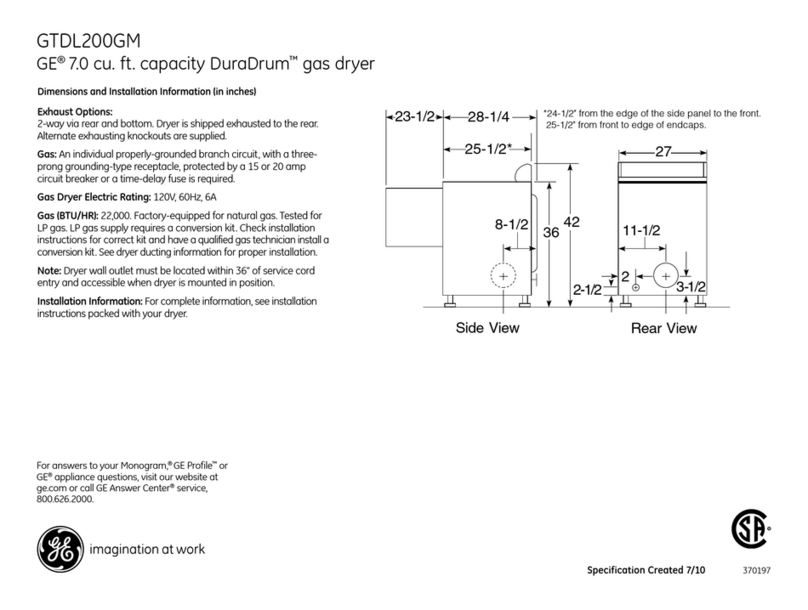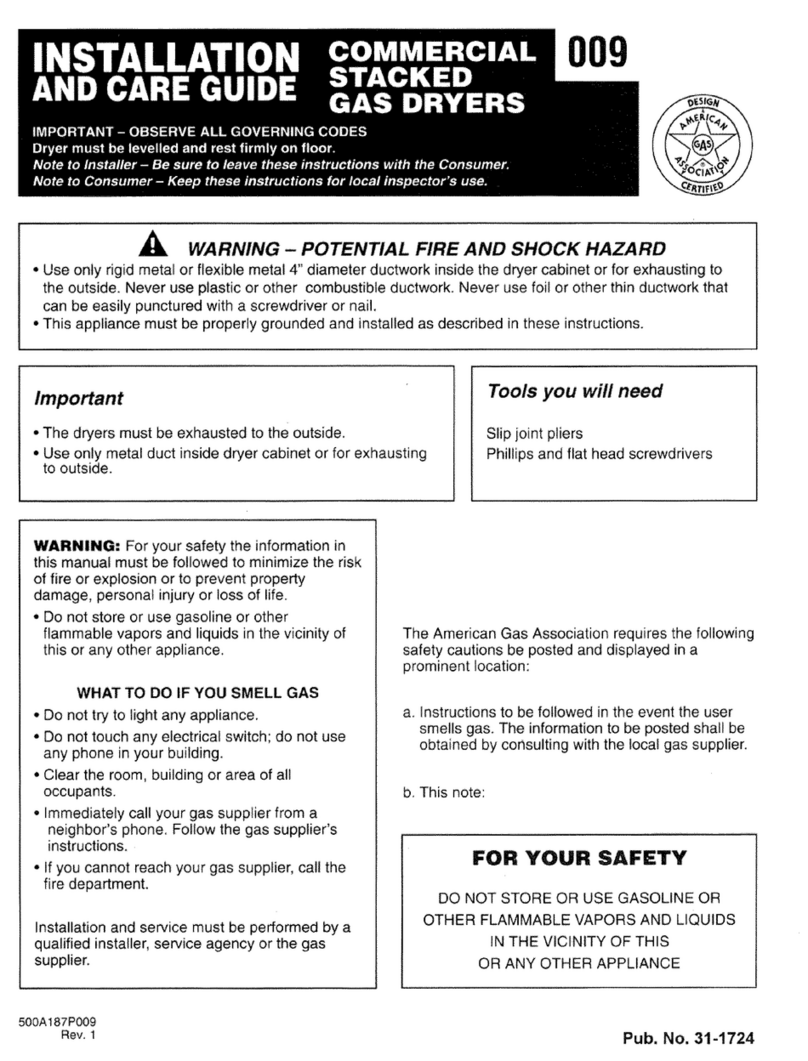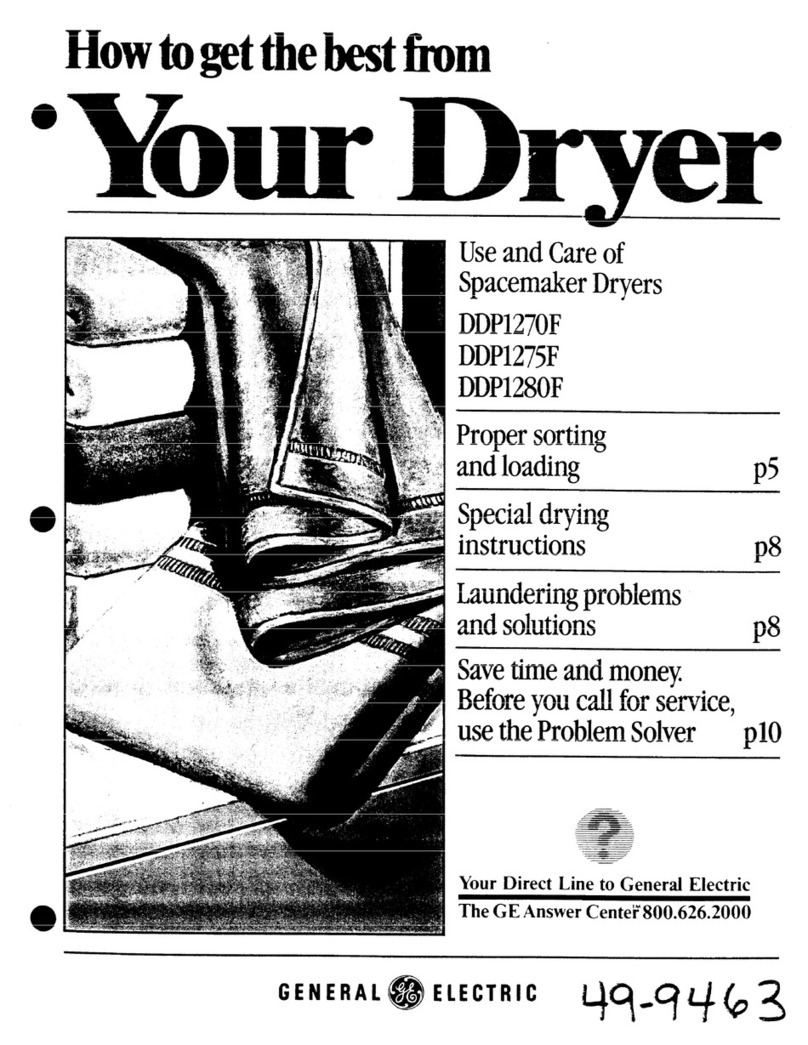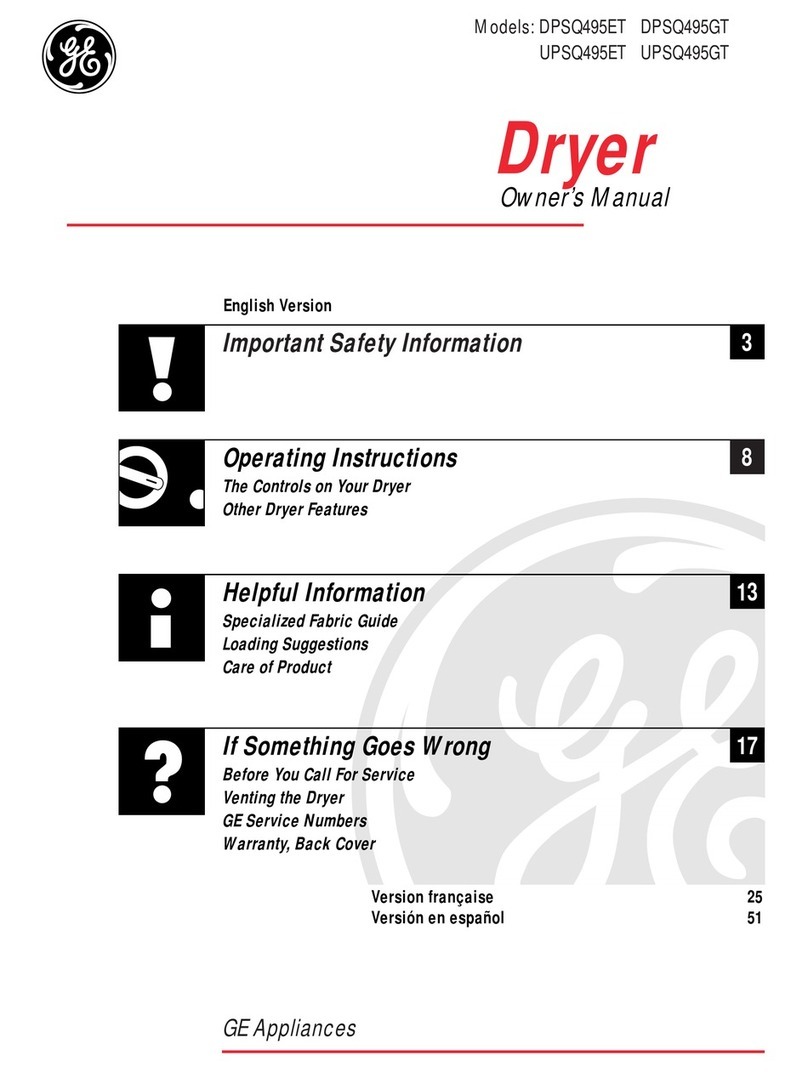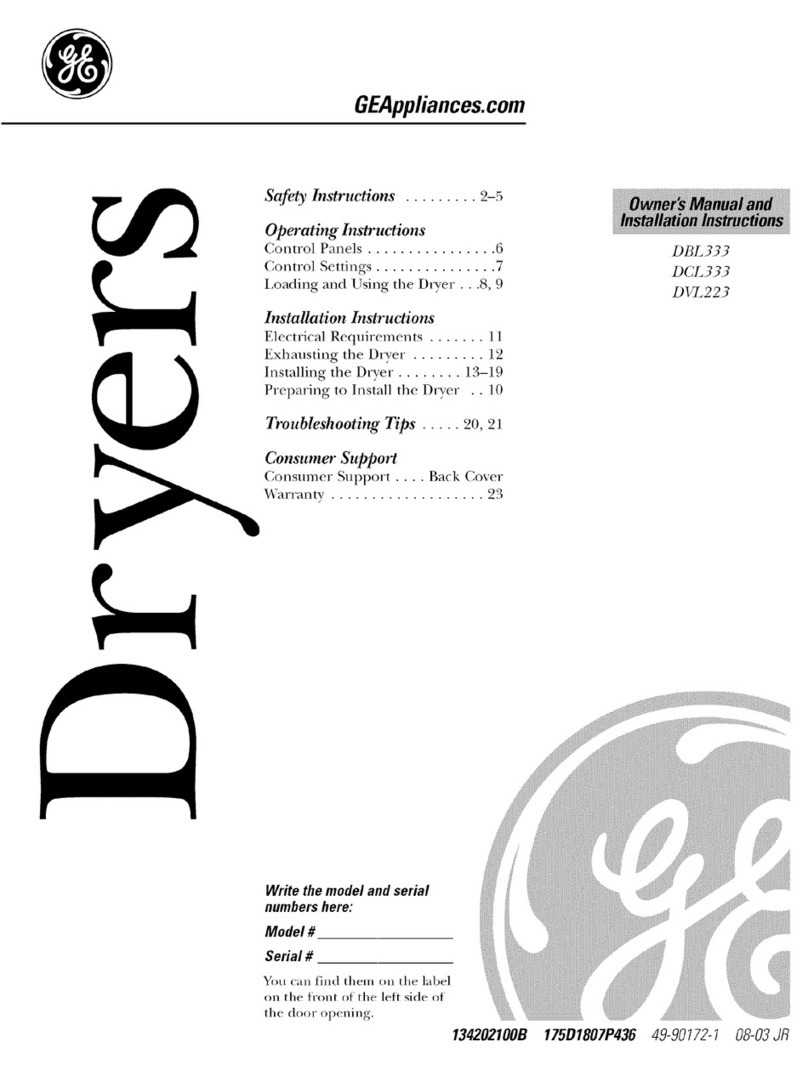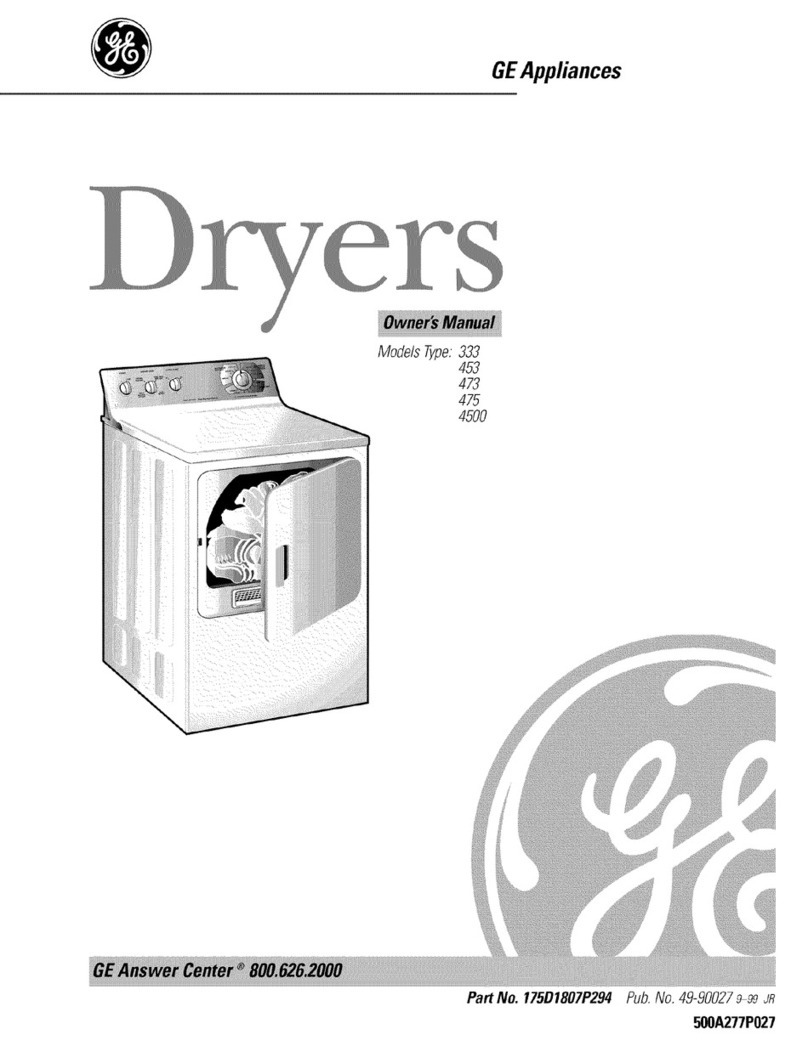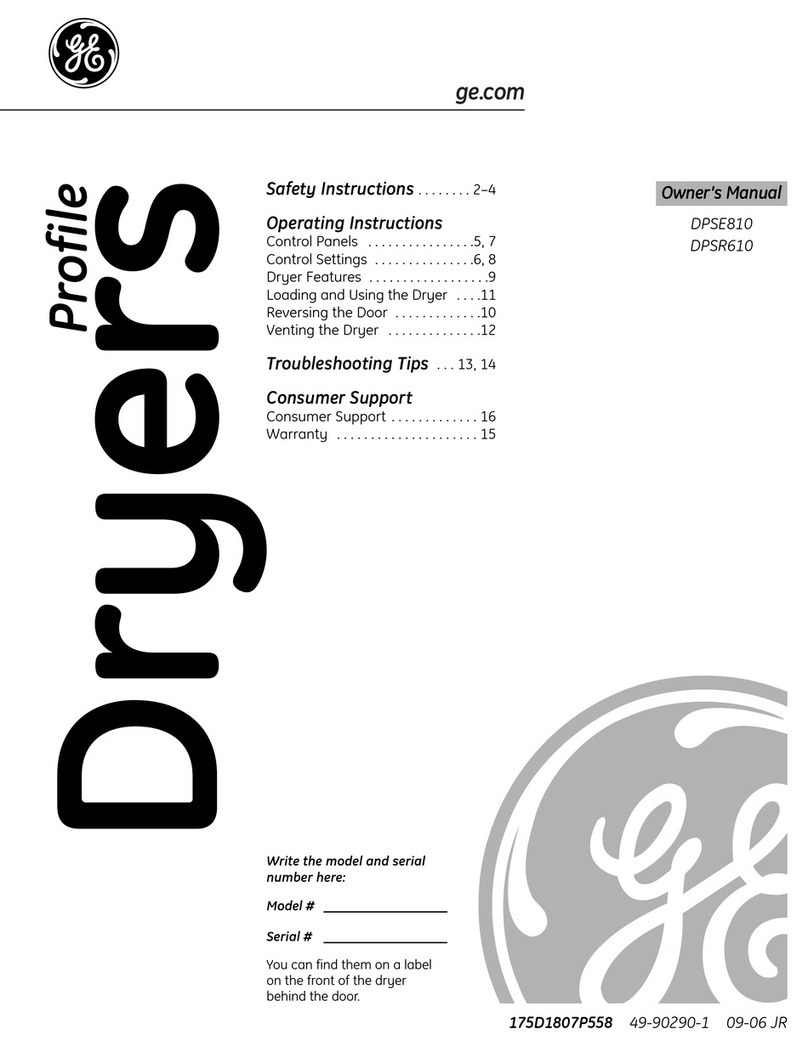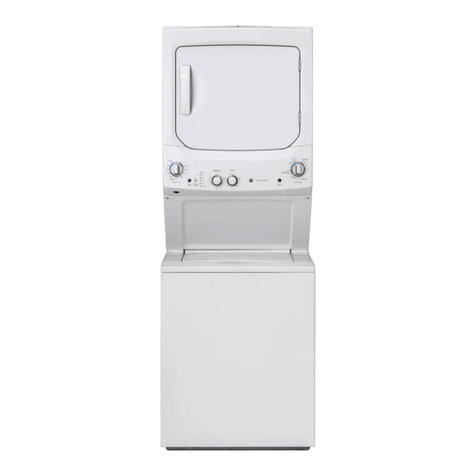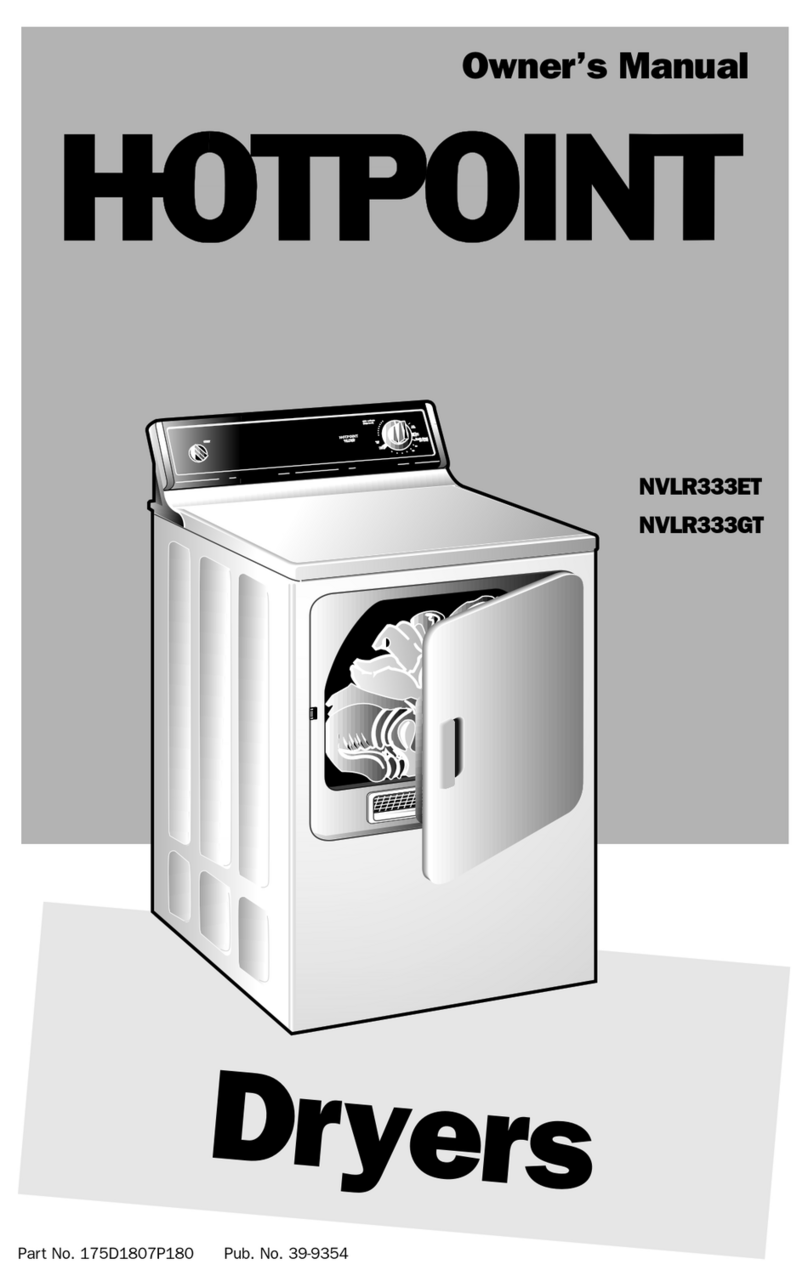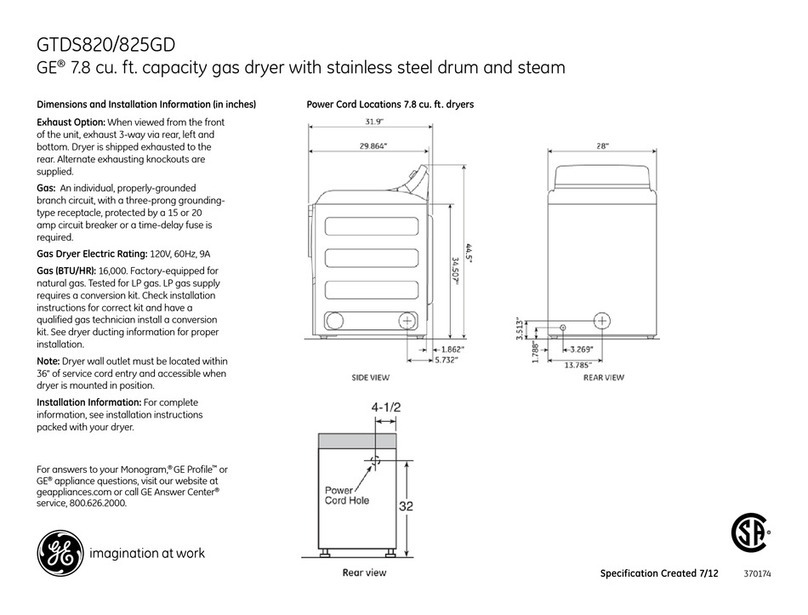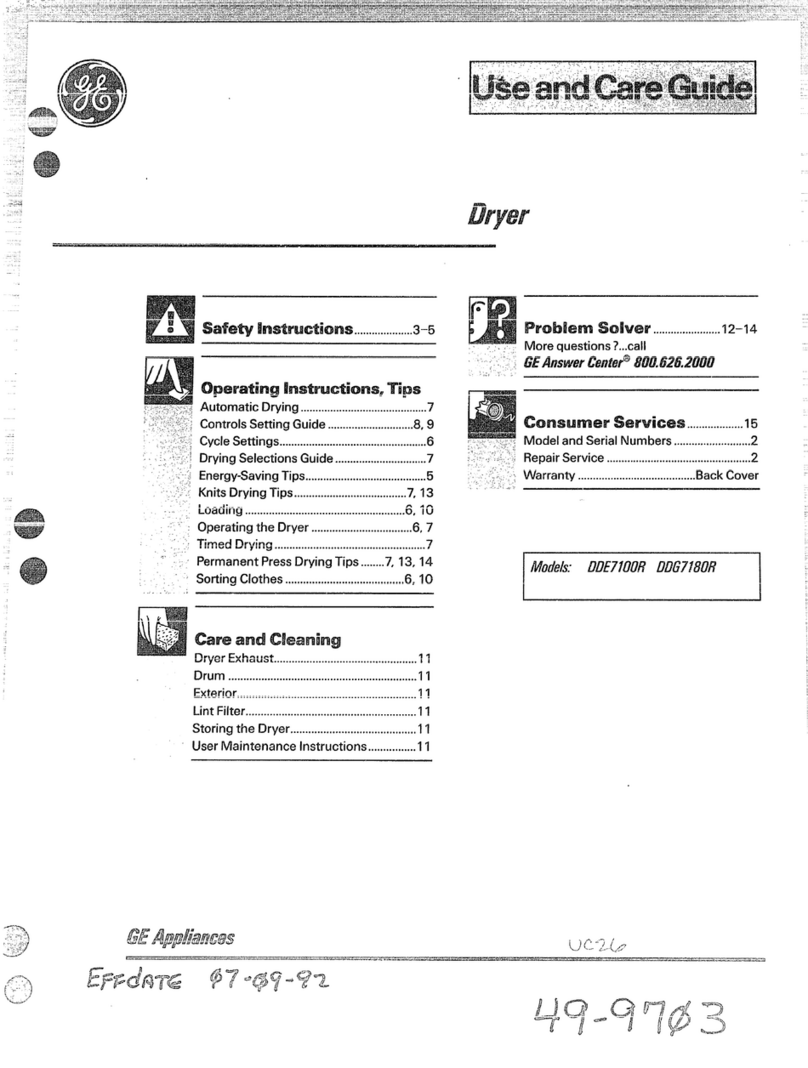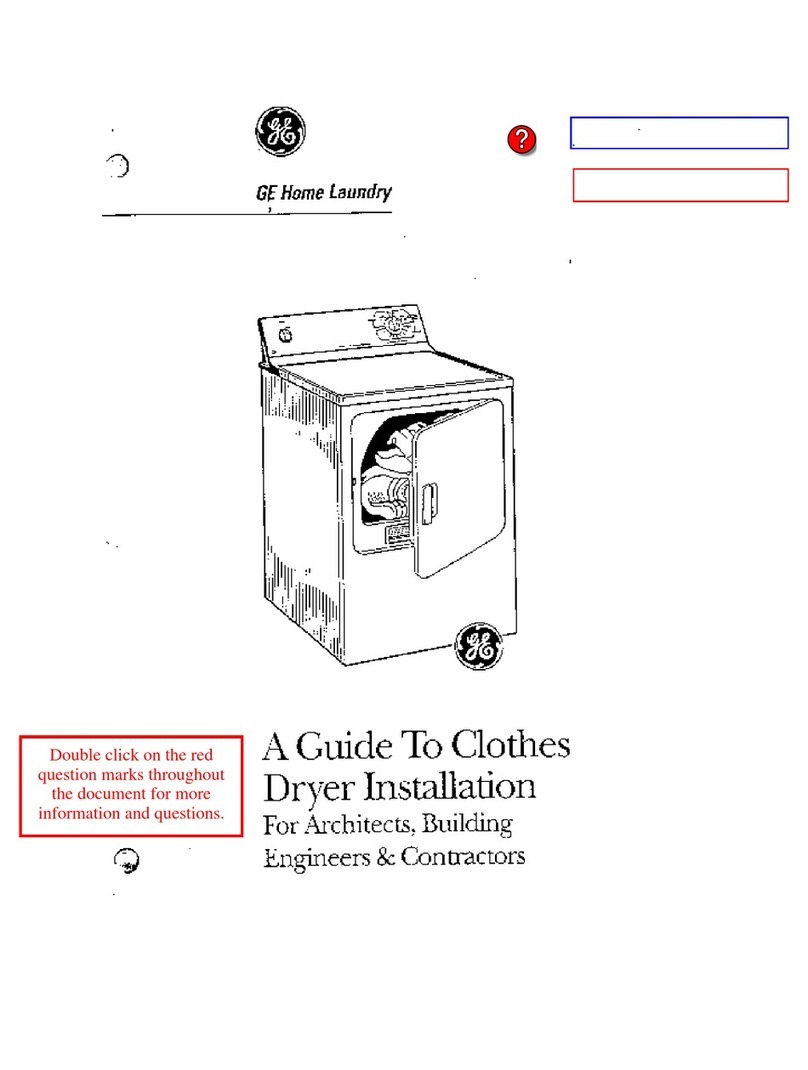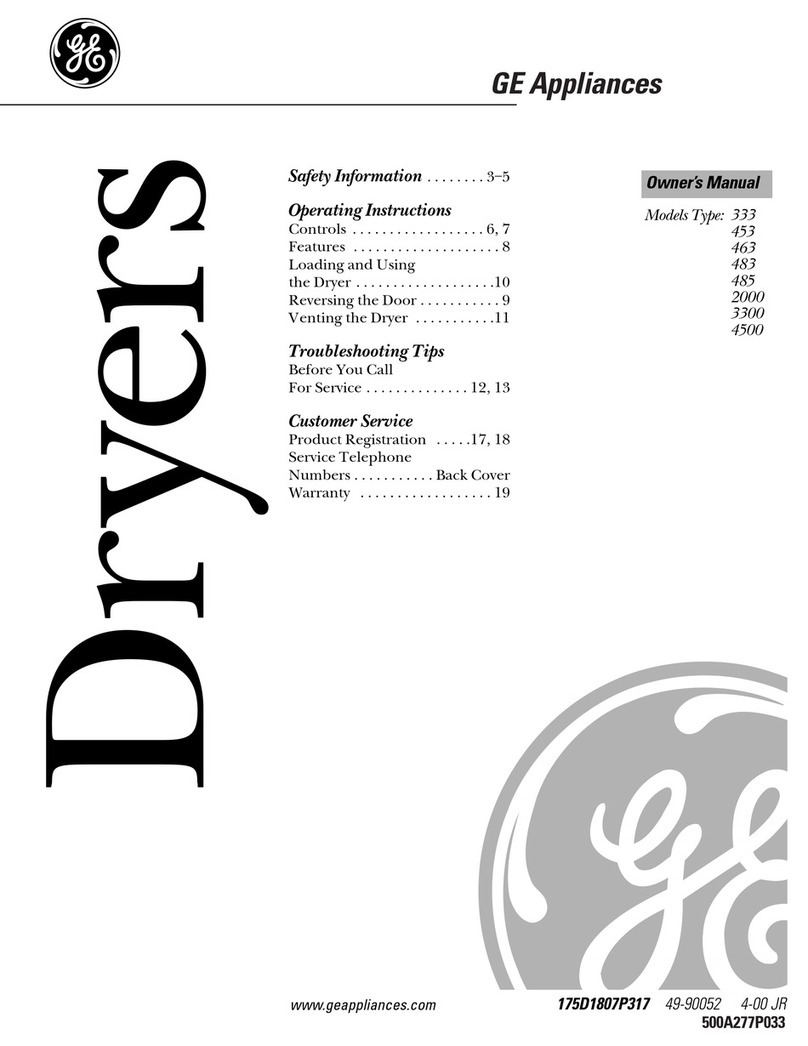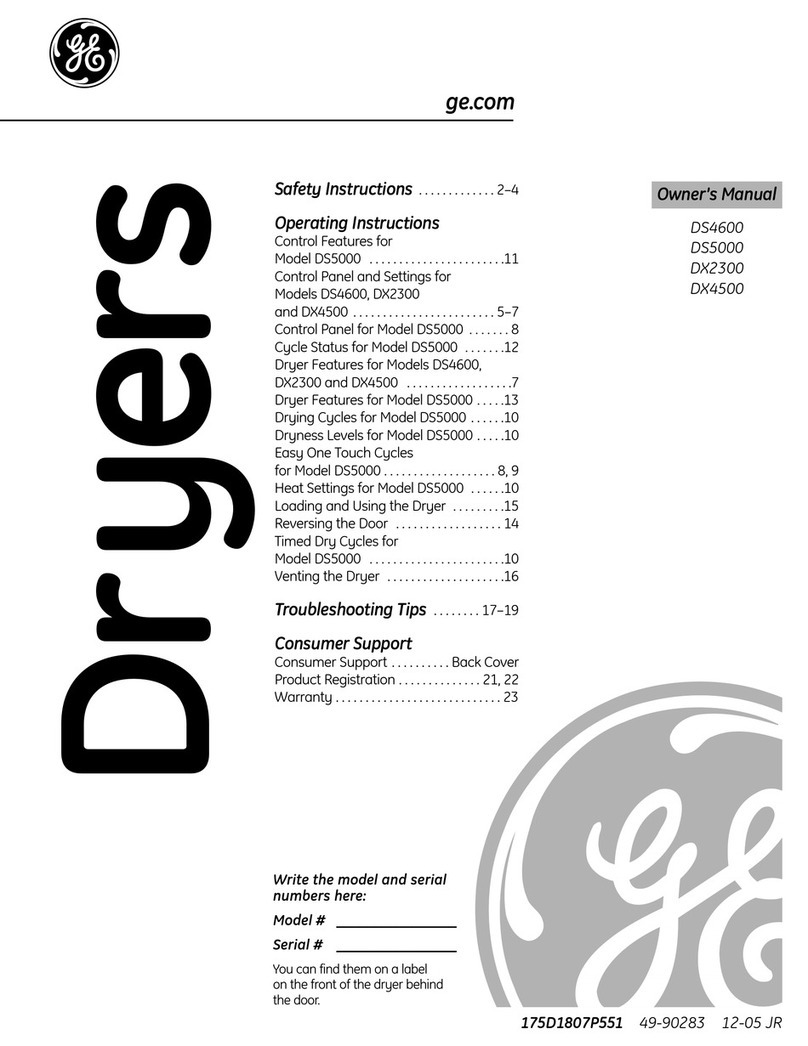
~~~~1~~–When using this
appliance, aiways exercise basic
safety precautions, including the
following:
@L%ethis appliancecdy for its
intendedpurposeas described in
this Use and Care Book.
~This washermust be properly
hstakxi and located in
accordancewith the Installation
InstructionsMm it is used. If
you did not receive an installation
Instructions sheet with your
washer, you can obtain one by
contacting the service location
nearest you. See page 20 for
address and phone number.
-Properly ground to conform
with all governing codes
and ordinances.
-Install or store where it will not
be exposed to temperatures
below freezing or exposed to
the weather.
-Connect to aproperly rated,
protected and sized power-
supply circuit to avoid electrical
overload.
-Connect to adequate plumbing
and drain facilities as described
in the Installation Instructions.
~With permanently installed
model, turn off water faucets when
the washer is not in use to relieve
pressure on hoses and valves, and
to minimize leakage if ahose or
valve should break or rupture.
~With portable model, turn
faucets off and disconnect hose
coupler when washer is not in use.
@When disconnecting this
appliance pull by the plug rather
than the cord to avoid damage to
the cord or junction of cord and
plug. Make sure that the cord is
located so that it will not be
stepped on, tripped over or
otherwise subjected to damage
or stress.
@We strongly recommend that
any servicing be performed by a
qualified individual.
~The wiring diagram for this
machine is located inside the
lower front access panel.
To minimize the possibility
of injury:
@Do not mix chlorine bleach with
ammonia or acids such as vinegar
and/or rust remover. Mixing can
produce atoxic gas which may
cause death.
@Do not wash or dry articles that
have been previously cleaned in,
washed in, soaked in, or spotted
with combustible or explosive
substances such as gasoline,
degreasers, drycleaning solvents,
etc. that may give off vapors that
could ignite or explode.
Do not add these substances to
the wash water.
Do not use these substances
around your washer and/or dryer
during operation.
~HYDROGEN GAS is produced by
the chemical action within your
water heater and the gas can
accumulate in the water heater
and/or water pipes if hot water has
not been used for aperiod of two
weeks or longer. HYDROGENGAS
CAN BE EXPLOSIVEUNDER
THESE CIRCUMSTANCES.So to
prevent the possibility of damage
or injury, if you have not usedhot
water for two weeks or more, or
move into aresidence in which the
hot water system may not have
been used for some time, turn on
all hot water faucets and allow
them to run for several minutes
before using any electrical appii-
ance which is connected to the
hot water system. This will allow
any hydrogen gas to escape. Of
course, since the gas is flam-
mable, do not smoke or use an
open flame or appliance during
this process.
~Never reach into the washer
whik parts are moving.Always
stop the washer to load, unload,
add forgotten items or add
additional laundry aids.
For your safety, the washer lid is
locked closed during spin cycle. To
open lid during spin cycle, push
the timer knob IN and wait for lid
lock to release, about 30 seconds,
before opening.
At end of cycle lid lock will release
after about 30 seconds, The washer
will fill and agitate with the lid
open.
@Close supervision is necessary
if this appliance is used by or near
children. Do not allow children to
play inside, on or with with appli-
ance or any discarded appliance.
Dispose of discarded appliances
and shipping or packing materials
properly,
~Never operate portable model in
locations where it could conceiv-
ably create ahazard, such as top
of stairs or edge of unguarded
landing.
~Keep all laundry aids (such as
detergents, bleaches, fabric
softeners, etc.) out of the reach
of children, preferably in alocked
cabinet. Observe all warnings
on container labels to avoid
personal injury.
eKeep the area around and under-
neath your appliances free from
the accumulation of combustible
materials, such as lint, paper, rags,
chemicals, etc.
gTo minimize the possibility of
electric shock, unplug this appli-
ance from the power-supply before
attempting any maintenance or
cleaning (except the removal and
cleaning of the lint filter).
IhKYIETurning the Cycle Selector
to an OFF position does NOT
disconnect the appliance from the
power-supply.
@Do not operate this appliance if
it is damaged, malfunctioning,
partially disassembled, or has
missing or broken parts, including
adamaged cord or plug.
gDo not wash fiberglass articles
in your washer. Skin irritation
could result from the remaining
particles that may be picked up
by clothing during subsequent
washer use.
.Never climb on or stand on the
washer top.
For Washer Operation
gDo not leave washer lid up
during cycle. The washer will fill
and agitate with the lid open.
For your safety, the washer lid is
locked closed during spin cycle. To
open lid during spin cycle, push
the Cycle Selector IN and wait for
lid lock to release, about 30
seconds, before opening.
At end of cycle, lid lock will
release after about 30 seconds.
gDO NOT CHANGE CYCLE OR
MANUALLY ADVANCE CYCLE
SELECTOR WHEN DIAL IS OUT
Push in Cycle Selector and wait for
washer to stop. Then select new
Cycle and pull cycle Selector to
restart.
2


